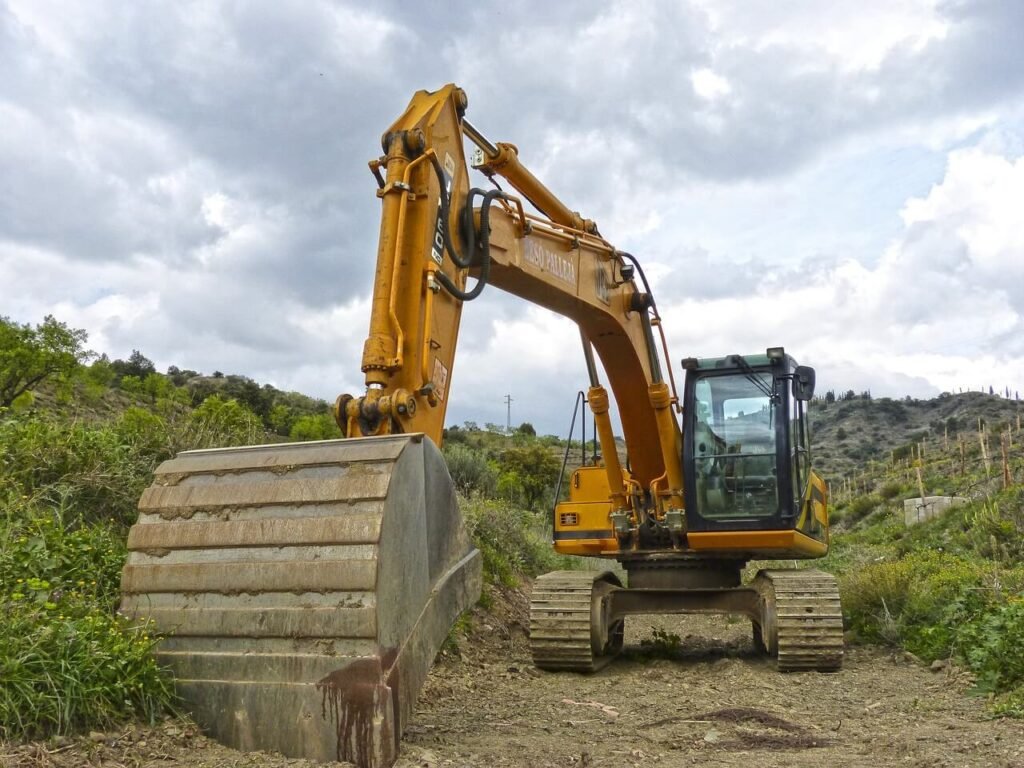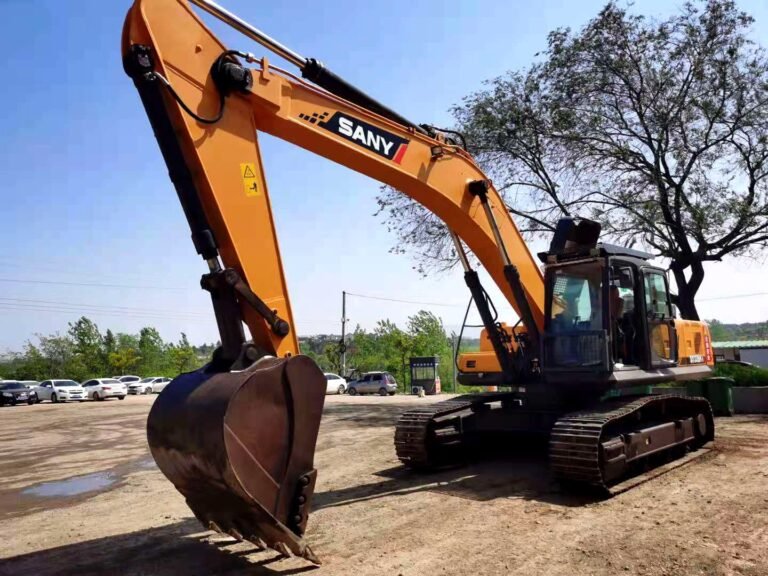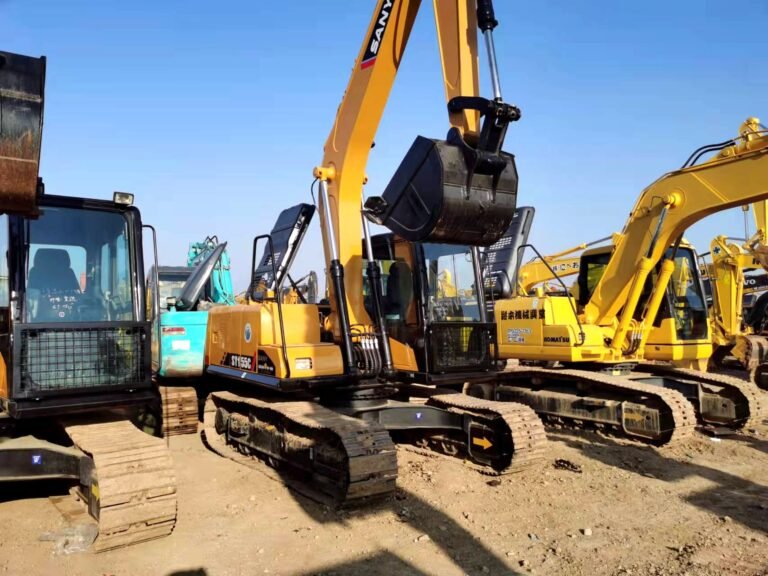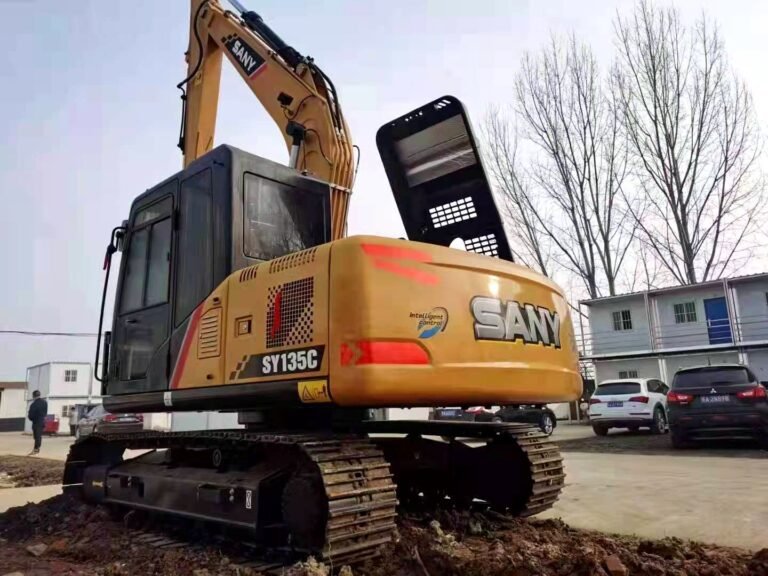Used Sany excavator
Product Catelog
Contact us
- Mr. Stefan
- +86-15154636670
- Info@hixenmachinery.com
Mail Us
Send your Inquiry

Advantages of Sany Excavator
1.Durable Construction: Caterpillar excavators are renowned for their robust build quality, ensuring durability and longevity in demanding working environments.
2.Powerful Performance: With high-horsepower engines and efficient hydraulic systems, Caterpillar excavators deliver exceptional digging power and productivity.
3.Advanced Technology Integration: Incorporating cutting-edge technology such as GPS guidance and automated functions, Caterpillar excavators optimize performance and efficiency.
4.Versatility: Caterpillar provides a wide range of excavator models with interchangeable attachments, allowing users to adapt the machines to various tasks with ease.
Benefits of Buying Used Excavator
1.Cost Savings: Second-hand excavators typically come at a lower price than new models, making them particularly attractive for budget-conscious small to medium-sized businesses or individual investors.
2.Performance Validation: With used excavators, you can easily find information about their performance and reliability from existing users, helping you avoid purchasing subpar equipment.
3.Immediate Availability: Unlike new equipment that requires production and delivery time, used excavators are usually available immediately for use, saving you time.
4.Diverse Options: The second-hand excavator market offers a variety of equipment choices, including different ages, sizes, brands, and models, allowing you to select the most suitable equipment for your specific needs.
5.Reduced Depreciation Costs: Purchasing used equipment can mitigate the impact of depreciation costs, as the equipment has already undergone depreciation in previous use.

How to Assess the Condition of a Used Excavator
Inspect the Exterior:Check for signs of damage or excessive wear on the body, frame, and attachments. Look for cracks, dents, rust, or welding repairs, which may indicate previous damage or poor maintenance.
Check the Undercarriage: Inspect the tracks or wheels for wear, damage, or misalignment. Excessive wear can indicate heavy use or neglect, potentially leading to costly repairs.
Operational Test: Start the engine and assess its performance, listening for unusual sounds. Test the brakes, steering, and transmission for smooth operation. Check the lifting mechanism for any hesitations or irregular movements.
Test lights, gauges, and safety features: During this evaluation, meticulously assess the functionality of lights, gauges, and safety features, ensuring they operate seamlessly. Additionally, confirm the battery's condition and its ability to hold a charge, addressing critical aspects of the forklift's electrical system for overall operational reliability.

Hour Meter Verification: Confirm the hour meter's accuracy, a crucial step to gauge the machine's historical usage. Higher operating hours may signify increased wear and tear, potentially impacting the equipment's overall longevity and influencing decisions about its condition and future performance.
Commonly Asked Questions
How do I request a quote for the excavator?
You can get a quote by contacting our customer service department, which is available 24/7.
What is Your MOQ For The Order?
You have the flexibility to order just one unit of any product you prefer. We ensure delivery according to your specified requirements.
How long does it take for my order to be processed and delivered?
Typically, a standard excavator order is fulfilled within 7-10 business days, not including transit time. Transit time varies between 7 to 15 days, depending on your location. Custom or bulk orders may have a slightly extended processing duration.
What additional information can you provide about your used excavator?
To view more used excavators, Download our current catalog for an overview of all products.
What is the average lifespan of your used excavator?
Our used excavators have a lifespan that depends on maintenance and usage. With proper care, they are designed for reliable performance over many years.
What warranty coverage is provided for your used excavators?
Our used excavators come with a one-year warranty and include technical support and after-sales service. Additionally, they undergo comprehensive testing before being shipped.
Guide to Buying a Quality Used Excavator: Key Factors to Consider
This guide provides essential insights into purchasing a high-quality used excavator. It covers crucial factors to consider, including maintenance records, visual and structural inspections, operational testing, structural integrity, safety features, pricing, and financing options. Understanding the maintenance history and usage of the excavator is emphasized, along with thorough visual and structural inspections to ensure its condition. Operational testing is recommended to assess performance, while attention to safety features and structural integrity is essential for operator safety. Additionally, the guide discusses pricing considerations and explores financing options to make the purchase more manageable. By following these guidelines and working with reputable sellers, buyers can make informed decisions and ensure that their used excavator meets their project needs reliably.
Table of Contents
- Introduction
- Maintenance Records and Usage History
- Visual and Structural Inspection
- Operational Testing
- Finding a Trustworthy Seller
- Structural Integrity and Safety Features
- Price and Financing Optionsn
- Conclusion
Maintenance Records and Usage History
First and foremost, understanding the maintenance records of the excavator is crucial. A regularly maintained excavator typically has a longer lifespan and more reliable performance. Ask the seller for maintenance records, including servicing, repairs, and parts replacements history. This information can help you gauge whether the excavator has been well taken care of and if there are any signs of common issues.
Additionally, inquiring about the excavator’s usage history is essential. Find out if it has been used for heavy-duty work or under special conditions and whether there are any accident records, as this information can impact its structure and performance.
Visual and Structural Inspection
Before purchase, conducting a thorough visual and structural inspection is essential. Check the excavator’s appearance, including paint condition, exterior damage, and signs of corrosion. Inspect structural components such as the hydraulic system, bucket, arms, and tracks for any significant wear or damage.
Also, check the condition of the tires or track systems, as these components often experience higher rates of wear. If the excavator is equipped with tracks, ensure the tension of the tracks and the wear of the chains are within acceptable ranges.
Operational Testing
Before purchase, conducting a thorough visual and structural inspection is essential. Check the excavator’s appearance, including paint condition, exterior damage, and signs of corrosion. Inspect structural components such as the hydraulic system, bucket, arms, and tracks for any significant wear or damage.
Also, check the condition of the tires or track systems, as these components often experience higher rates of wear. If the excavator is equipped with tracks, ensure the tension of the tracks and the wear of the chains are within acceptable ranges.
Finding a Trustworthy Seller
Before purchase, conducting a thorough visual and structural inspection is essential. Check the excavator’s appearance, including paint condition, exterior damage, and signs of corrosion. Inspect structural components such as the hydraulic system, bucket, arms, and tracks for any significant wear or damage.
Also, check the condition of the tires or track systems, as these components often experience higher rates of wear. If the excavator is equipped with tracks, ensure the tension of the tracks and the wear of the chains are within acceptable ranges.
Structural Integrity and Safety Features
When considering the purchase of a used excavator, it’s crucial to assess its structural integrity and ensure the presence of essential safety features.
Structural Integrity: Inspecting the structural integrity of the excavator involves checking the frame and key components for signs of damage, wear, or repairs. Look for cracks, weld repairs, or any other indications of structural weakness that could compromise the machine’s stability and performance. A thorough inspection should cover the hydraulic system, bucket, arms, and tracks to ensure they are in good condition and free from any defects.
Safety Features: Confirming the presence of safety features is essential for operator protection and compliance with safety regulations. Two critical safety features to look for are Rollover Protection Structures (ROPS) and Falling Object Protection Structures (FOPS). ROPS provide a protective cage around the operator’s compartment to safeguard against rollover accidents. FOPS protect the operator from falling objects or debris by deflecting or absorbing impacts.
Inspect these safety features to ensure they are intact and functioning properly. Check for any signs of damage, corrosion, or missing components that could compromise their effectiveness. Additionally, verify that the excavator meets relevant safety standards and regulations for your region or industry.
By prioritizing structural integrity and safety features when evaluating a used excavator, you can ensure the machine is safe to operate and meets your requirements for reliability and performance.
Price and Financing Options
When it comes to purchasing a used excavator, considering the price and exploring financing options are crucial steps in making an informed decision.
Price Evaluation: Before finalizing the purchase, it’s important to thoroughly evaluate the price of the used excavator. This involves comparing the asking price with the machine’s condition, maintenance history, and performance. It’s essential to ensure that the price accurately reflects the value of the excavator and is competitive compared to similar models on the market. Additionally, consider any additional features or attachments included in the price, as these can affect the overall value proposition.
Financing Options: Exploring financing options can help make the purchase of a used excavator more manageable for your budget. Financing allows you to spread out the cost of the excavator over time, rather than paying the full amount upfront. Common financing options include:
Loans: Obtaining a loan from a bank or financial institution allows you to borrow the funds needed to purchase the excavator. You’ll repay the loan over a set period, typically with fixed monthly payments and interest rates.
Leasing: Leasing the excavator involves renting it for a predetermined period, with the option to purchase it at the end of the lease term. Leasing can offer lower monthly payments compared to loans and may provide tax benefits for businesses.
Dealer Financing: Some dealerships may offer financing options directly to buyers, often with competitive rates and flexible terms. Dealer financing can streamline the purchasing process and may include special promotions or incentives.
Conclusion
In summary, purchasing a used excavator requires careful consideration of several key factors to ensure that it meets your project needs and provides reliable performance. First, assessing the maintenance records and usage history provides insight into the machine’s care and any potential issues it may have had in the past. Second, conducting a thorough visual and structural inspection helps identify any visible wear, damage, or structural weaknesses that could affect the excavator’s performance. Third, operational testing allows you to assess the machine’s working performance and functionality. Fourth, confirming the presence of safety features such as ROPS and FOPS is essential for operator safety. Finally, considering the price in relation to the machine’s condition and exploring financing options can help make the purchase more manageable. By following these guidelines and working with reputable sellers, you can make an informed decision and ensure that your used excavator meets your project requirements reliably.
Send Your Inquiry Now
Get a Rapid Quote for Your Project Needs
Receive a Quick Quote or Share Your Requirements, and We’ll Respond Promptly!








